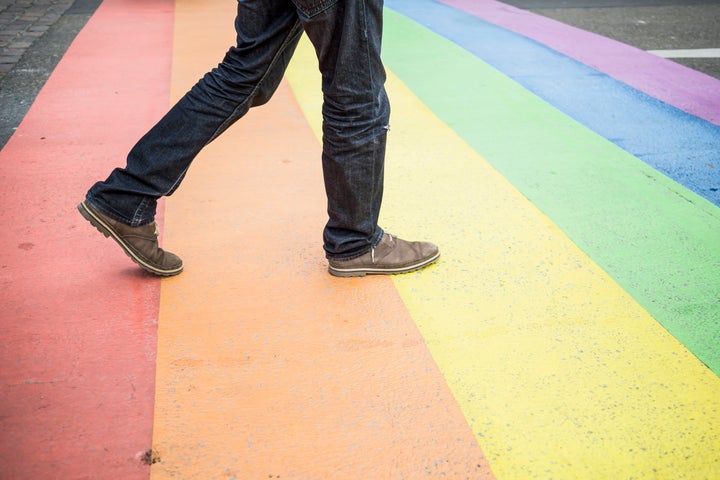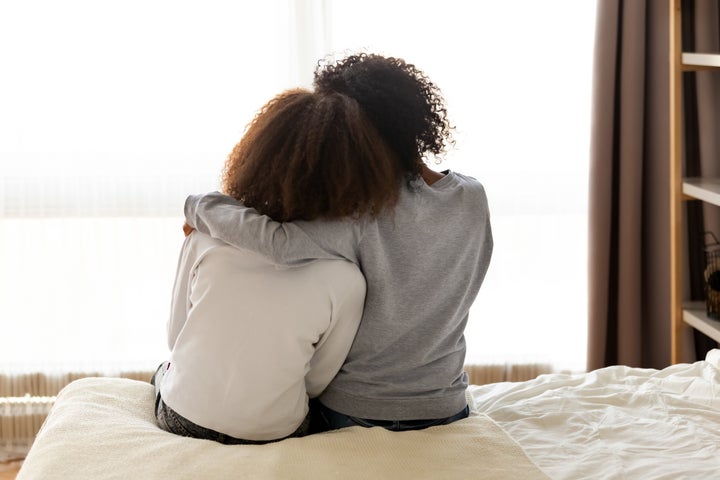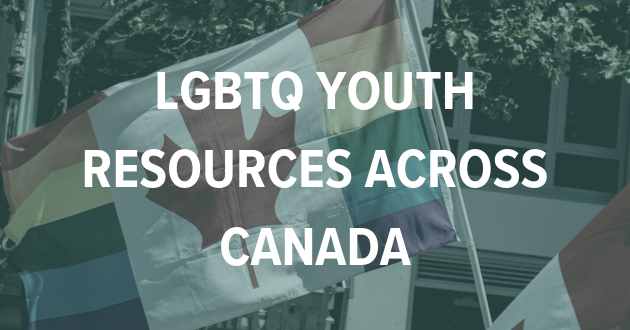Content warning: this story contains mention of a youth considering suicide.
Every time I come out to someone new, I brace myself. My heart plummets, imagining invasive questions about my queerness or a snide remark demeaning my non-binary identity. These worries are usually unfounded. Most I disclose to are kind and considerate, acknowledging me before we move on with our conversations. I feel like one of the lucky ones. Others aren’t so lucky.
“My mom attempted to cast a demon out of me the day I came out,” Bryan Montalban, a 25-year-old retail manager from Calgary, writes to me over Facebook. He describes his coming-out-as-gay experience a decade ago to conservative Christian parents as a last-resort decision. “I came out to my parents because I was very suicidal ... I thought I had to tell them or else I wouldn’t live into my [twenties].”
Montalban’s negative experience is sadly still a reality for many LGBTQ+ Canadians who come out to their loved ones. While reporting on queer and trans stories over the years, I’ve heard from those who live in shelters because they were rejected, and youth who have had to cut off ties from their families after unsupportive reactions. Many times, I’ll be asked to use a pseudonym for my closeted sources, because they fear the consequences of being read about by their parents.

When it comes to handling the fallout of a negative coming out experience, the outlook for LGBTQ youth who suspect they are headed towards one is severe. A study from the San Francisco State University found that lesbian, gay, and bisexual youth respondents who were rejected by family were more likely to consider suicide than cisgender, heterosexual youth. And the minority stress felt by LGBTQ Canadians can contribute to a despairing mentality, both in and out of the closet.
HuffPost Canada talked to experts who work with LGBTQ+ youth about what can be done to prevent or reduce the impact of a bad coming out experience. Here’s what they had to say:
Consider your safety before coming out
Would coming out jeopardize your welfare? If that’s the case, some advise treading with caution.
LGBT Youthline is a provincial support helpline for queer and trans youth in Ontario. Its program manager, Minna Frederick, says their peer workers encourage youth to consider their motivations for coming out.
It’s one thing to come out because you want to or you can no longer hide who you are; trans youth who need medical transition procedures and teens whose mental health can suffer without disclosure, like Montalban once was, could fall under this category.
It’s another to out yourself because external pressure from society makes you think it’s the “right” thing to do. Coming out is a common narrative in North American pop culture, but isn’t the norm for many people of colour.
Watch: Schitt’s Creek actor Dan Levy raised over $20,000 for LGBT Youthline. Story continues after video.
“Sometimes that pressure can lead to situations that are more dangerous or risky than they need to be,” Frederick told HuffPost Canada. “Sometimes taking that risk is worth the benefits, and other times it isn’t, depending on the person.”
If ultimately coming out isn’t viable, she says that the helpline employs a harm reduction approach when they’re called and validates whatever decision youth arrive at.
Youth are prompted to consider other areas of their lives they can be out: if home isn’t safe, maybe at school, online, or in a close friend circle can be. If a parent won’t take the news well, confiding in another relative could be safer. Some identities might be better received than others: disclosing a sexual orientation can be safer than disclosing a gender identity.
As well, solace might be found in considering living openly in the future. This could be when a youth is no longer dependent on loved ones for living essentials or when they’re older. Many LGBTQ+ Canadians, including Ottawa mayor Jim Watson, have come out later in life.
Preparing for every scenario
If coming out remains the route a youth wants to take, experts recommend having a safety plan ready. The Los Angeles LGBT Center states that a safety plan should assess a youth’s circumstances, what risks to their wellbeing could occur, and list strategies for dealing with distressing situations.
That could mean taking stock of what your support system can do for you, who you can trust to receive counselling from, and potentially, where you can go if you are kicked out; sadly, homelessness is a risk factor for those who are outed at home. As many as two in five homeless youth in Canada are LGBTQ+.
Looking back, Montalban doesn’t regret coming out. What he does regret is not making a safety plan.
“I had no backup plan if I was disowned, or anything of the sort,” he recalled, adding that he worried his Christian missionary parents would be fired if word spread around. “I was also threatened with expulsion from my Christian high school. I was 15 when I came out. I wasn’t really prepared for any of this.”
Trans organizer Fae Johnstone says that working with others is essential to preparing for what to do if things go wrong. Johnstone, who goes by she and they pronouns interchangeably, told HuffPost Canada that can mean arranging to couchsurf with a friend if a household gets dangerous.

Beyond the risk of physical violence or displacement, those looking to come out should prepare for any potential emotional support they may need. The Human Rights Center 2018 report on LGBTQ+ youth found that 75 per cent of respondents said coming out to parents was “extremely stressful;” 78 per cent of youth who aren’t out to their family hear homophobic and transphobic remarks from them.
Knowing even just one person who affirms you can make a big difference. Queer and trans youth who had at least one adult’s support are 40 per cent less likely to consider suicide, the Trevor Project found.
If that person can’t be found in one’s family or social circles, it’s worth getting in touch with LGBTQ community organizations in one’s area. Not only can they provide tips and resources ― parents might appreciate brochures and access to articles about their child’s identity during the coming out process ― they can also connect youth with an adult educator.
Dealing with rejection
Unfortunately, a person may broach the subject with their loved ones and receive a negative verbal response. That can range from dismissal to hateful comments about the person’s identity. It’s important that these painful words aren’t taken to heart.
“There can be a lot of feelings of betrayal and hurt, these are really valid and raw,” Johnstone said. “Folks need people or a space to process that. I hate the idea of people soaking in that experience alone.” She emphasized the importance of reaching out to supporters by outlining what they need to feel better.
“I am at my house right now, I just had something go bad. I just need somebody to talk with; listen to me, let me know that like they cherish me, and hold me close,” they said, as an example.

Sometimes, a bad reaction can be made impulsively. The individual should gauge whether their loved one truly meant what they said and judge for themselves whether they’ve received an absolute rejection — if not, from there they can figure out if they’re willing to work with their loved one to mend their relationship and reach a level of family acceptance.
Undertaking that work doesn’t have to be done alone. An LGBTQ+ organization like PFLAG Canada could bridge gaps. Started in the US by the mother of a gay activist, PFLAG specializes in working with families. Their Canadian chapters support both Canadian youth who come out, as well as their families who ask for help.
The Family Acceptance Project lists several ways a family behaves when it rejects an LGBTQ+ youth. Physical violence, denial, mistreatment, and conversion therapy — a practice which is still legal in Canada — are all obvious indicators of identity rejection. If a youth is at risk of assault at home, they are encouraged to seek medical aid and call 911, if that is the safest option for them.
Lack of trust in police and other reasons might make an LGBTQ+ youth avoid legal intervention. In that case, reducing harm is their best option: that can look like leaving home for a while to stay with someone outlined in their safety plan.
Conversely, family acceptance is a lot easier to spot. Parents can show acceptance by emphasizing affection for their children, making efforts to learn more about LGBTQ+ issues, and standing up for them when they are demeaned.
“Folks need people or a space to process that. I hate the idea of people soaking in that experience alone.”
- Fae Johnstone
In Montalban’s case, he didn’t talk to his parents for a long time. He came to that decision after hurtful instances, where they would pray he would find a wife or verbally berate him for being gay.
Now, their relationship has improved, thanks to distance and his boundary-setting. In the past, they would send him anti-LGBTQ+ articles to read. As an adult, he’s learnt to put his foot down.
“‘I don’t want you doing this and if you continue to do this, I will be blocking you,’” he told them.
When asked if he has tips for Canadian youth in the same position he was in, Montalban urges caution.
“It’s not necessarily pessimism or paranoia to think you could be kicked out of the house or disowned … In the end, realize it is totally your decision whether you come out and when it happens,” he answered.
An ongoing process
Life today for Montalban is good, thanks to social circles that accept him for who he is. He’s since been in a position to support others, going on to co-found an LGBTQ+ network at Trinity Western, a Christian University in B.C.
“I have a serious relationship, I am financially independent and I have many friends, both queer and not queer, who support me wholeheartedly,” he said.
As someone in a similar boat as Montalban, I still feel tremendously lucky. After all, living in a city as diverse as Toronto means I have access to support if coming out ever goes wrong.
Still, having that choice to be openly queer and non-binary doesn’t mean I always take it. For myself and many queer, trans, and Two-Spirit people living in Canada, coming out is not a one-time event that can be dealt with on a national day. Its an ongoing experience that requires constant self-assessing of our safety and comfort levels.
Although I hope for the best in all my future coming outs, being prepared for the worst ― keeping a safety plan in mind, knowing who to call for help and to remind me of my worth — are strategies I take comfort in, while waiting for a day when my heart doesn’t sink.

Across Canada
PFLAG has chapters in every province, with several in Ontario and British Columbia.
LGBT Youthline operates across Ontario. Youth can call or text a counsellor, who can listen and connect to resources relevant to their issues, as well as those that are available in their region. Johnstone recommends the helpline or its online service as the first place to turn to when looking for appropriate resources.
Finding LGBTQ-inclusive shelters can be challenging. LGBTQ-positive resources are available across Canada for youth experiencing homelessness. Canada’s first LGBTQ shelter YMCA Sprott House offers transitional housing. Egale Centre, which is slated to open at the end of the year, will house teens and adults under 29.
Atlantic
Gay Halifax and Mount St. Vincent University both have lists of Maritime youth resources. Nova Scotia’s long-running The Youth Project runs workshops, drop-ins and summer camps.
Central
Egale Youth Centre operates a daily drop-in and meal service in Toronto, as well as counselling services.
The 519 Centre, located in Toronto’s Gay Village, provides programs for youth that offer mentorship, community involvement, and artistic opportunities. Some are geared towards specific identities, such as their program for newcomer youth.
Montreal’s Project 10 and GRIS-Montréal have various projects and groups geared for youth.
West
Youth out west can connect to support through the Rainbow Alliance for Youth in Edmonton, Out Saskatoon, and the Manitoba Rainbow Directory.
Vancouver youth seeking help can talk to a counsellor through Qmunity’s youth division, which also operates a drop-in, a chest-affirming program, and a special events calendar. Parents can also seek support in raising their youth too.
North
Queer Yukon organizes the territory’s pride celebrations and community events. In Nunavut, the Facebook group Iqaluit Pride and general helpline Kamatsiaqtut may be able to provide support for youth. Support for those in the Northwest Territories can be found at the Rainbow Youth Centre, operated by the Rainbow Coalition of Yellowknife.
CORRECTION: A previous version of this story stated that LGBT Youthline was a national helpline. It is in fact a helpline that serves the province of Ontario.
Are you in a crisis? If you need help, contact Crisis Services Canada at their website or by calling 1-833-456-4566. If you know someone who may be having thoughts of suicide, read this guide from the Centre for Addiction and Mental Health (CAMH) to learn how to talk about suicide with the person you’re worried about.
Also On HuffPost: